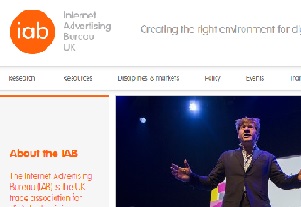Ad blocking on mobile is small, but growing – experts warn against complacency
 With Christmas round the corner, some retail advertisers are raising fears about the effects the rise in ad-blocking could have on their digital operations. But where the focus was once solely on desk and laptop computing, experts are now asking what steps need to be taken to prevent mobile consumption suffering the same fate.
With Christmas round the corner, some retail advertisers are raising fears about the effects the rise in ad-blocking could have on their digital operations. But where the focus was once solely on desk and laptop computing, experts are now asking what steps need to be taken to prevent mobile consumption suffering the same fate.
Earlier this month, my colleague Matt looked at the public appetite – or lack of it – for viewing ads online and suggested some of the creative ways publishers are attempting to combat that antipathy.
Matt, rightly, suggested web-users find online advertising annoying, intrusive, and often irrelevant, and quoted figures from a recent Internet Advertising Bureau and YouGov survey that found 15% of internet users routinely use ad-blocking software.
Since that piece was published the IAB has updated its figures. In just five months since the previous study, disaffection with ad-blocking technology online has grown. The fresh YouGov study suggests that now 18% of users routinely use ad-blocking software.
As more people become familiar with ad-blocking technology steady growth is, perhaps, to be expected. But more surprising is the finding that ad-blocking is used more widely amongst younger web users than other groups – and dissatisfaction is growing. In addition, the new research looked closely at ad-blocking on smartphones. Just 4.1% of people surveyed said they blocked ads on smartphones, but this was up from 2.9% in June – almost a 50% increase. This is the fastest increase in the use of the technology in any format.
The IAB rightly points out that despite growth those blocking ads on smartphones still only represents a small group of users (and the figure is dwarfed by the number blocking ads on large screens) but that hasn’t prevented digital advertising experts from warning about complacency.
Penry Price, VP of marketing solutions at LinkedIn, wrote recently that a crisis is looming in the advertising sector. The prevailing assumption, says Price, is that as consumption moves from laptop to mobile, content producers and advertisers will feel the benefit of a new environment where ad blocking isn’t common. In effect, advertisers hope that ad-blocking could dissipate naturally.
Well not necessarily, Price says, as changes in ad-blocking use on mobile could come quickly. As we have seen, although small, ad blocking on mobiles is already growing. Advertisers should not assume that because mobile inventory is largely unaffected at the moment, it will always be the case.
Here’s a case in point: Facebook’s head of ad tech Dave Jakubowski told Marketing Week recently that he loved the Associated Press but “when you launch the app it still has a banner ad at the bottom; it is awful. Eight years or so ago, the pop up ad was an awful, intrusive ad unit. Banner on mobile is the same thing and has to go away.”
The IAB, says the Guardian, has pushed for simpler ads, arguing that focus on intrusive formats such as pop-ups and non-skippable video has pushed users into adopting ad blockers. Whether or not this message gets through as publisher and advertisers increasingly focus on mobile remains to be seen.
Unless advertisers change the way they appear on screen, it is likely that mobile ad-blocking will rise to the levels already experienced in other formats.